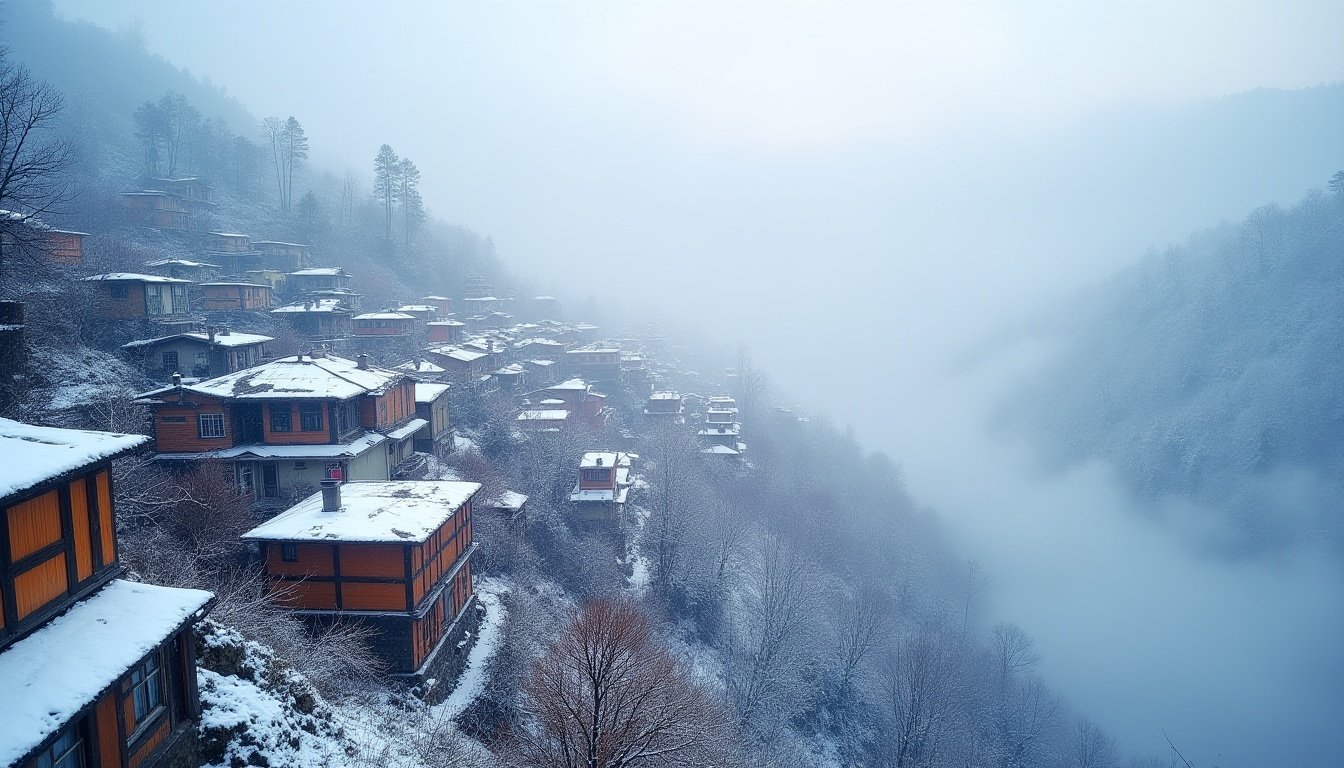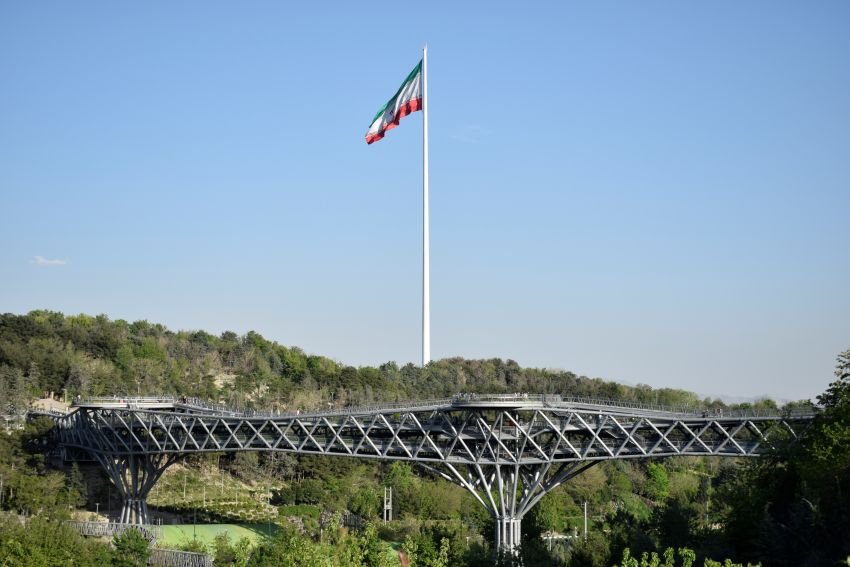Spiritual Travel
Uttarakhand’s Groundbreaking Initiative to Protect Thousands of Devotees: A New Era for Pilgrimage Tourism at Mansa Devi Temple

Thursday, July 31, 2025
In the wake of a tragic stampede that claimed nine lives and left several others injured at the Mansa Devi temple in Haridwar, the Uttarakhand Tourism Department has announced its plans to formulate a comprehensive master plan aimed at crowd management at religious and pilgrimage sites. This move comes after intense scrutiny regarding the safety of devotees visiting these spiritual destinations. The state government has taken swift action, prioritizing safety, crowd control measures, and public facility improvements across major pilgrimage locations.
The recent tragedy at the Mansa Devi temple, where devotees faced overcrowded conditions on narrow stairways, has brought to light the urgent need for systematic changes in how religious tourism is managed in Uttarakhand. The stampede on July 27, 2025, underscored the challenges faced by pilgrims, especially in crowded spaces at famous temples like Mansa Devi, one of the most visited spiritual sites in India.
Key Highlights of Uttarakhand’s Pilgrimage Crowd Management Master Plan
- Strategic Focus on Safety: The master plan will focus on ensuring the safety and well-being of pilgrims through improved crowd management systems.
- Key Areas of Development: Entry-exit routes, emergency evacuation plans, and a system for better guidance and information will be implemented.
- Removal of Encroachments: Illegal encroachments along pilgrim routes will be cleared as a priority, enhancing accessibility and safety.
- Comprehensive Public Facilities: Additional public facilities such as drinking water stations, toilets, first-aid stations, and parking will be set up to accommodate the large influx of visitors.
- Deployment of Security Forces: Increased security personnel will be deployed to manage crowds more effectively.
Introduction: Addressing Overcrowding and Safety Concerns at Pilgrimage Sites
Uttarakhand, a state renowned for its revered pilgrimage sites such as Haridwar, Rishikesh, Kedarnath, and Badrinath, draws millions of devotees every year. These sacred destinations are not only spiritual hubs but also vital sources of tourism revenue. However, the recent tragic incident at Mansa Devi has brought to the forefront the pressing issue of overcrowding and inadequate safety measures at these temples.
With thousands of visitors flocking to Uttarakhand’s pilgrimage spots annually, the state has been under increasing pressure to implement effective crowd control strategies. Many temples are perched atop hills or situated in narrow, confined areas that are not equipped to handle such a large number of visitors. The tragic stampede at Mansa Devi Temple exposed the vulnerabilities in the current system, forcing the Uttarakhand government to rethink its approach toward managing these revered destinations.
In response, Chief Minister Pushkar Singh Dhami has directed the Tourism Department to prepare a master plan that will overhaul the management of these sites. This plan will focus on implementing comprehensive crowd control systems, enhancing safety protocols, and improving public facilities, ensuring that pilgrims can visit the temples without compromising their security.
The Urgency of Addressing Overcrowding: Why Uttarakhand Needs a Master Plan
Overcrowding at popular pilgrimage sites in Uttarakhand has become an ongoing challenge. Haridwar, Rishikesh, and other temple towns are visited by millions each year, particularly during peak religious events and festivals. With such a high volume of visitors, managing the flow of devotees effectively becomes a critical issue. The stampede at Mansa Devi Temple has highlighted the need for a systematic approach to crowd management.
The Uttarakhand government recognizes the need to adapt to the growing number of pilgrims and to take proactive measures to prevent future accidents. As these temples continue to be vital spiritual and tourist destinations, ensuring the safety of the millions who visit them is not just a priority; it’s a responsibility that the state can no longer ignore.
The new master plan will not only focus on preventing overcrowding but will also take into account the future expansion of pilgrimage tourism. A carefully developed infrastructure is crucial for maintaining the sanctity of these temples while ensuring that pilgrims can have a safe and smooth experience.
The Master Plan: Key Features and Implementation Strategy
The proposed master plan aims to address both immediate concerns and long-term strategies for managing pilgrimage sites. It will focus on:
1. Crowd Control Systems
- One of the primary objectives of the master plan is to introduce more effective crowd control systems. These systems will regulate the flow of visitors, especially during peak hours or religious festivals. Measures such as controlled entry-exit points, increased monitoring, and designated waiting areas will be implemented to manage the influx of devotees efficiently.
2. Enhanced Public Facilities
- Recognizing that the lack of basic amenities can exacerbate overcrowding and inconvenience, the plan calls for significant improvements in public facilities. This includes the construction of more toilets, drinking water stations, and emergency medical facilities. Pilgrims will also benefit from well-organized parking areas and adequate spaces for rest and recreation.
3. Security Enhancements
- Security is another major concern at crowded pilgrimage sites. The plan will see the deployment of additional security forces to ensure the safety of the pilgrims. Surveillance systems will be upgraded, and crowd management protocols will be implemented to prevent any untoward incidents.
4. Removal of Illegal Encroachments
- Encroachments along the routes leading to temples and other religious sites often create bottlenecks and hinder the smooth movement of pilgrims. The government has prioritized the removal of these illegal structures, ensuring that the routes to the temples are clear, safe, and easily navigable.
5. Emergency Evacuation Plans
- In light of the stampede, the master plan will incorporate emergency evacuation plans. These will include designated routes for evacuating people in case of any emergency and the development of facilities to handle such situations effectively.
Collaboration for Effective Implementation: A Coordinated Approach
The Chief Minister of Uttarakhand, Pushkar Singh Dhami, has directed the Tourism Department to work closely with local administrative bodies in both Garhwal and Kumaon regions. The Divisional Commissioners of these regions will be instrumental in the planning and execution of the master plan, ensuring that the local challenges and needs are addressed.
Additionally, collaboration with experts in crowd management, security, and public facility development will play a key role in ensuring that the master plan is effective. The Uttarakhand Tourism Department has been instructed to consider the input of experts and stakeholders in order to create a sustainable and efficient system that balances religious reverence with the need for modern safety measures.
The Road Ahead: A Future-Oriented Vision for Pilgrimage Tourism
The master plan is not merely a reaction to the recent tragedy at Mansa Devi Temple; it represents a forward-thinking approach to pilgrimage tourism in Uttarakhand. With religious tourism being one of the cornerstones of the state’s economy, the successful implementation of this plan will not only ensure the safety and security of devotees but also enhance Uttarakhand’s reputation as a responsible and well-managed tourism destination.
The new measures will allow Uttarakhand to continue its tradition as a hub of spiritual tourism while embracing the modern needs of infrastructure and safety. With this, the state aims to offer an experience where both the sanctity of the pilgrimage and the well-being of the pilgrims are prioritized, ensuring that these sacred sites remain a source of spiritual solace for generations to come.
Conclusion: A Critical Step Toward Safe and Sustainable Pilgrimage Tourism
Uttarakhand’s decision to implement a master plan for pilgrimage crowd management reflects a deep commitment to the safety and convenience of its millions of visitors. While religious tourism remains a vital aspect of the state’s economy and cultural heritage, it is imperative that the infrastructure keeps pace with the growing number of pilgrims. This master plan promises to address the challenges posed by overcrowding, providing a safer and more organized environment for all devotees.
With the government’s focus on ensuring the security and comfort of pilgrims, the future of Uttarakhand’s religious tourism looks brighter and safer. The state’s proactive measures will help it continue to be a key destination for spiritual travelers, combining its ancient heritage with modern safety standards.
Spiritual Travel
India Faith-Based Tourism Market Growth by 2032: Key Destinations Like Varanasi, Amritsar, Rishikesh, Ajmer, and Shirdi to Drive Future Expansion

Saturday, August 2, 2025
The India faith-based tourism market is a dynamic and expanding sector within the broader tourism industry, drawing millions of devotees and travelers to the country’s sacred sites. These destinations, rich in cultural and spiritual heritage, have long been magnets for those seeking a deeper connection to their religious beliefs. In recent years, the sector has experienced significant transformation, driven by factors such as enhanced infrastructure, digital booking platforms, government initiatives, and evolving consumer preferences for experiential travel. As the market continues to grow, destinations like Varanasi, Amritsar, Rishikesh, Ajmer, and Shirdi are poised to play key roles in shaping the future of India’s faith-based tourism market by 2032.
Market Overview
India has long been a hub for spiritual and religious tourism, attracting pilgrims from around the world. With a population deeply rooted in various faith traditions, the country’s tourism market has witnessed a steady increase in the number of travelers visiting religious sites for both spiritual and cultural experiences. In 2025, the India Faith-Based Tourism market is estimated to be valued at USD 1,361.1 million, and it is expected to grow substantially, reaching USD 3,689.5 million by 2032. This represents a compound annual growth rate (CAGR) of 15.0% from 2025 to 2032, highlighting the sector’s rapid expansion.
As faith-based tourism becomes an increasingly significant contributor to India’s tourism economy, destinations that blend spirituality with cultural experiences are attracting not only domestic pilgrims but also international travelers. These sites are no longer just places of worship but have become destinations that offer holistic travel experiences, combining wellness, culture, and history.
Key Drivers of Growth in Faith-Based Tourism
The growth of India’s faith-based tourism market can be attributed to several key factors:
- Organized Pilgrimage Tours: A significant driver of this market’s growth is the increasing demand for structured pilgrimage tours. In 2024, over 45 million travelers participated in organized faith-based travel packages, reflecting a 20% year-on-year increase. This surge underscores the growing preference for curated spiritual experiences that offer convenience, comfort, and personalized itineraries. Pilgrims are seeking more organized, well-managed travel experiences that cater to their spiritual needs.
- Technological Advancements: The digitalization of the tourism sector has played a pivotal role in streamlining access to faith-based travel experiences. Online travel platforms, mobile applications, and payment solutions have simplified the booking process for both domestic and international tourists. The convenience of booking pilgrimage tours online has resulted in an 18% increase in average transaction value for faith tourism-related bookings in 2024. The accessibility of digital tools has not only improved user engagement but also expanded market reach.
- Infrastructure Improvements: Regional connectivity has significantly improved, especially in states with major pilgrimage sites like Uttarakhand and Tamil Nadu. Investments in dedicated airport and rail infrastructure have made travel to these religious sites more accessible, resulting in a 12% increase in pilgrimage footfalls in these regions. Enhanced transport connectivity ensures that devotees can reach their destinations more quickly and comfortably, fueling growth in faith-based tourism.
- Wellness and Cultural Integration: Another key trend influencing the growth of faith-based tourism is the integration of wellness and cultural experiences into pilgrimage itineraries. Increasingly, travelers are seeking experiences that blend spirituality with personal well-being. Studies indicate that in 2025, 30% of faith-based travelers are opting for packages that combine spiritual activities with wellness retreats. This trend is broadening the scope of faith tourism, allowing it to attract a more diverse group of travelers.
Emerging Faith-Based Destinations in India
While traditional pilgrimage routes like the Char Dham, Vaishno Devi, and Golden Temple in Amritsar continue to draw millions of pilgrims each year, several emerging destinations are expected to play an increasingly important role in the country’s faith-based tourism landscape by 2032. These destinations are capitalizing on their spiritual significance, improved infrastructure, and integrated tourism offerings.
1. Varanasi: The Spiritual Capital of India
Varanasi, one of the oldest cities in the world, remains a central destination for pilgrims and tourists alike. As a major Hindu pilgrimage center, Varanasi attracts millions of visitors each year. The city’s ghats, temples, and spiritual aura make it a must-visit for anyone seeking a deeper connection to Hinduism. The growing popularity of Varanasi as a faith-based tourism destination is further supported by its expanding infrastructure, including new flight routes and improved amenities for tourists. By 2032, Varanasi is expected to see a significant rise in visitor numbers, with more travelers seeking spiritual and cultural experiences.
2. Amritsar: A Center for Sikh Pilgrimage
Amritsar, home to the Golden Temple, is one of India’s most important pilgrimage destinations for Sikhs. The city’s cultural and religious significance, coupled with its vibrant history, makes it a prime destination for spiritual tourism. The growing number of international travelers, especially from the Sikh diaspora, is contributing to Amritsar’s rise as a major faith tourism hub. By 2032, the city is expected to see further growth in both domestic and international visitor numbers, particularly as tourism infrastructure continues to improve.
3. Rishikesh: The Yoga and Spiritual Hub
Rishikesh, known as the “Yoga Capital of the World,” has seen a surge in tourism, particularly from international travelers seeking spiritual experiences. Located on the banks of the Ganges River, Rishikesh is not only a major Hindu pilgrimage site but also a destination for wellness and yoga retreats. The combination of spirituality, wellness, and adventure tourism has made Rishikesh an attractive destination for modern-day pilgrims. Its popularity is expected to grow, with more travelers seeking to combine their spiritual journeys with health and wellness activities.
4. Ajmer: A Hub for Sufi Pilgrimage
Ajmer, home to the revered Sufi shrine of Khwaja Moinuddin Chishti, attracts millions of Muslim pilgrims each year. The city’s significance in the Sufi tradition makes it one of India’s most important pilgrimage centers for Muslims. The growing interest in Sufi culture and spirituality, combined with improved accessibility and infrastructure, is driving the growth of Ajmer as a faith tourism destination. The city’s religious and cultural offerings are expected to attract even more visitors by 2032.
5. Shirdi: The Seat of Sai Baba’s Legacy
Shirdi, the home of Sai Baba, continues to be a major pilgrimage destination for millions of devotees. The temple complex and the surrounding town have seen significant developments in infrastructure, making it easier for pilgrims to visit. The growing number of travelers, particularly from Maharashtra and neighboring states, is expected to drive growth in Shirdi’s faith-based tourism sector. With continued investment in facilities and services, Shirdi is set to become an even more prominent destination for religious tourism in the coming years.
Conclusion
India’s faith-based tourism market is poised for substantial growth by 2032, driven by factors such as organized pilgrimage tours, technological advancements, infrastructure development, and the integration of wellness and cultural experiences. As the sector expands, destinations like Varanasi, Amritsar, Rishikesh, Ajmer, and Shirdi will play crucial roles in attracting pilgrims and travelers seeking spiritual fulfillment. With a forecasted CAGR of 15.0%, the India faith-based tourism market is set to become a significant contributor to the country’s overall tourism economy, offering a wide range of opportunities for growth and development in the coming years.
Spiritual Travel
Tehran Hosts Martyrs of Power Memorial Rally: A Family-Focused Spiritual Tour

Friday, August 1, 2025
On Thursday, Tehran’s Martyrs of Power Memorial family rally honored the sacrifices of war veterans and martyrs from the 12-day conflict between Israel and Iran. The rally has become a symbol of remembrance and unity. It was organized with the strong support of the families of martyrs, veterans, and self-sacrificing veterans. This emotional gathering aimed to honor the memories of those who gave their lives and to promote cultural unity through family involvement and spiritual tourism in the city.
A Journey of Remembrance and Unity
The rally was supported by the Touring & Automobile Club of the Islamic Republic of Iran’s Committee for Martyrs and War Veterans’ Family Affairs, in collaboration with Tehran’s Foundation of Martyrs and Veterans Affairs. Over 160 participants took part in the rally, which included 48 cars and took the participants through key historical and spiritual locations in Tehran. The event highlighted the deeply rooted values of sacrifice and martyrdom within Iranian culture, with a focus on promoting familial bonds and social cohesion.
The family rally commenced at the Tomb of the Unknown Martyrs, located in the northeastern part of Tehran, an iconic site where many heroes are commemorated. This destination is symbolic, as it represents the nation’s collective remembrance of its fallen soldiers. From there, the rally headed towards Behesht-e Zahra Cemetery, located in the southern part of Tehran. This cemetery, which is a key cultural and spiritual landmark in Iran, is the final resting place of many martyrs who lost their lives during the Iranian Revolution and the subsequent wars.
A Focus on Spirituality Over Competition
Unlike typical rallies that emphasize speed and competition, the Martyrs of Power Memorial rally was structured as a spiritual journey. The event did not revolve around racing or time trials; instead, it was designed to foster a sense of spiritual and cultural reflection among its participants. The judging panel focused on several aspects of the rally, including adherence to traffic laws, safety principles, accuracy in routing, team discipline, and overall traffic discipline. This approach helped to ensure that the rally was a peaceful and respectful occasion, in line with the event’s overall purpose of promoting unity and cultural values.
Honoring Martyrs and Promoting Family Ties
The culmination of the rally took place at the Nodbeh Hall of Behesht-e Zahra Cemetery, where the best participants of the rally were recognized and celebrated for their commitment to the principles of the event. The closing ceremony, which included officials from the Touring & Automobile Club of Iran and the Foundation of Martyrs and Veterans Affairs, was a moment of reflection, where participants reaffirmed their respect for the martyrs and their commitment to upholding the values of the Islamic Revolution.
In a moving gesture, participants placed flowers at the tombs of martyrs who died during the imposed 12-day war, paying tribute to their sacrifices. This moment marked the emotional high point of the rally, as participants renewed their pledge to continue honoring the ideals of the martyrs and the cultural legacy of sacrifice. The event provided an opportunity for families to come together in a cultural and spiritual atmosphere, strengthening familial bonds and deepening their connection to Iran’s rich history and values.
Preserving Cultural Heritage and Fostering Unity
The Martyrs of Power Memorial rally was much more than a mere remembrance event; it was an embodiment of Iran’s commitment to preserving the memories of its fallen heroes and imparting the values of selflessness, sacrifice, and patriotism to future generations. Through this rally, the public’s empathy and social cohesion were strengthened, and the significance of honoring the martyrs’ contributions to the nation was underscored.
The event also served as a platform for highlighting the cultural and spiritual tourism opportunities within Iran, which continue to attract domestic and international visitors interested in understanding the country’s deep-rooted traditions and historical significance. By focusing on the importance of family participation, the rally reinforced the importance of intergenerational communication and cultural transmission, ensuring that the memories of the martyrs remain alive for generations to come.
Conclusion: A Step Toward Promoting Cultural and Spiritual Tourism
The Martyrs of Power Memorial family rally is an important part of cultural tourism in Tehran and beyond. It combines historical remembrance with family-focused activities. This not only honors the martyrs but also encourages social unity and spiritual reflection. As Iran develops its cultural tourism sector, events like this will help preserve the nation’s heritage and create a sense of belonging among its citizens. By emphasizing sacrifice, patriotism, and unity, the rally shows the resilience and strength of the Iranian people.
Spiritual Travel
Spiritual Journeys, Business Plans, And Family Strain

Pisces Horoscope: Pisces is symbolised by the fish, representing duality, fluidity, and deep emotional currents. Governed by Neptune, the planet of dreams and spirituality, Pisceans are often described as intuitive, empathetic, and imaginative beings with a profound connection to the unseen realms. Your horoscope offers a roadmap for navigating life’s ebbs and flows, providing valuable foresight into career, relationships, health, and personal growth. With its emphasis on intuition and sensitivity, the horoscope encourages individuals to embrace their inner wisdom, trust their instincts, and explore the depths of their emotions.
Pisces Daily Horoscope (August 2):
[Disclaimer: The content of this article is based solely on astrological predictions, and should be taken as general guidance. Individual experiences may vary. ABPLive.com does not assert the accuracy or validity of any claims or information presented. It is strongly recommended to consult a qualified expert before considering or implementing any information or belief discussed herein.]
-

 Brand Stories2 weeks ago
Brand Stories2 weeks agoBloom Hotels: A Modern Vision of Hospitality Redefining Travel
-

 Brand Stories7 days ago
Brand Stories7 days agoCheQin.ai sets a new standard for hotel booking with its AI capabilities: empowering travellers to bargain, choose the best, and book with clarity.
-

 Destinations & Things To Do2 weeks ago
Destinations & Things To Do2 weeks agoUntouched Destinations: Stunning Hidden Gems You Must Visit
-

 Destinations & Things To Do7 days ago
Destinations & Things To Do7 days agoThis Hidden Beach in India Glows at Night-But Only in One Secret Season
-

 AI in Travel2 weeks ago
AI in Travel2 weeks agoAI Travel Revolution: Must-Have Guide to the Best Experience
-

 Brand Stories4 weeks ago
Brand Stories4 weeks agoVoice AI Startup ElevenLabs Plans to Add Hubs Around the World
-

 Brand Stories3 weeks ago
Brand Stories3 weeks agoHow Elon Musk’s rogue Grok chatbot became a cautionary AI tale
-

 Asia Travel Pulse4 weeks ago
Asia Travel Pulse4 weeks agoLooking For Adventure In Asia? Here Are 7 Epic Destinations You Need To Experience At Least Once – Zee News
-

 AI in Travel4 weeks ago
AI in Travel4 weeks ago‘Will AI take my job?’ A trip to a Beijing fortune-telling bar to see what lies ahead | China
-

 Brand Stories4 weeks ago
Brand Stories4 weeks agoChatGPT — the last of the great romantics













You must be logged in to post a comment Login